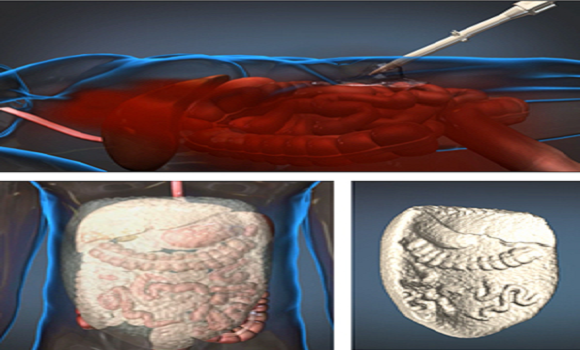Injectable Foam Blocks Internal Bleeding on the Battlefield
February 5, 2013 0
Field medics want to use a novel foam to seal off hemorrhaging organs, but safety concerns persist
John Eischeid
Despite their best efforts to stabilize
abdominal wounds sustained on the battlefield, military first-responders
have few options when it comes to stanching internal bleeding caused
by, for example, gunshots or explosive fragments. The Defense Advanced Research Projects Agency (DARPA) says it is studying a new type of injectable foam
that molds to organs and slows hemorrhaging. This could provide field
medics with a way to buy more time for soldiers en route to medical
treatment facilities.

“Initial battlefield care is provided in austere, often hostile conditions by field medics,” says Brian Holloway, program manager for DARPA’s Wound Stasis System program, which was launched in 2010 to find a technological solution to control internal hemorrhaging. The foam, made by Arsenal Medical, Inc., indiscriminately blocks the sources of the bleeding, almost like a scorched-earth campaign against blood loss.
“We’ve been waiting for this,” says Donald Jenkins, trauma director at Saint Mary’s Hospital in Rochester, Minn., and a 24-year Air Force veteran who has spent more than 700 days in combat zones, including in Afghanistan and Iraq. When asked how often he has seen soldiers suffer from abdominal hemorrhaging caused by explosives or gunshot wounds, he pauses and says, “Too many times.”
Arsenal Medical initially developed the foam to serve as a delivery mechanism for another treatment that would differentiate between healthy and wounded tissue, and then stop bleeding by binding only to the wounded portion. Using swine as subjects, researchers induced liver injury by wrapping a wire around the organ during surgery, closing the animal, and then pulling on a portion of the wire that had been left protruding through the skin. They waited 10 minutes between pulling the wire and injecting the two liquids in order to allow the blood to pool inside the body, as it often does in combat wounds.
Researchers were surprised at what they found when they removed the solidified foam. “When we saw the animal models that we had used, we realized that we had solved the [internal hemorrhaging] problem,” says Upma Sharma, lead researcher on the project. The foam reduced blood loss sixfold in those tests, and three hours after the injury the survival rate was 72 percent in the treatment group versus only 8 percent in the control group. Swine are often used as test subjects because pigs have an organ structure very similar to humans.
This particular foam is one of about 1,300 that Arsenal Medical researchers tested as they experimented with variables such as the rate of expansion and the amount of time in which the two chemical precursors became a solid foam. The researchers also had to consider whether or not the foam reacted with other fluids in the body. “We specifically engineered it as a two-part system so it would interact with itself,” Sharma says, explaining that the liquids, once injected, could not have a chemical reaction with other bodily fluids. Some foams also would not work because they could not push against the blood flow or they stuck to the tissue.
Although Arsenal Medical’s foam has a lot of potential, it still needs some work before it is field ready. After the material solidifies, it can cause bruising. In addition, the reaction between the two liquids generates heat, which raises the temperature of surrounding tissue by about 2 or 3 degrees Celsius. Sharma says this temperature increase is on par with a high-grade fever. Some patients might also have an allergic reaction to the foam.
Jenkins points out another potential problem: Pieces of solidified foam could break off inside the body and go adrift in a patient’s bloodstream, eventually blocking blood flow to the legs or lungs. Sharma says the researchers have not seen any evidence of this happening, however.
Nevertheless, Jenkins sees some promise in this new approach to a common problem for field medics, and perhaps first-responders in remote rural areas. “If half the deaths on the battlefield are torso hemorrhaging, and you were able to save 10 percent, would the survivors say it’s worth [the risk]?” he asked. “I’d say yes.”
http://www.scientificamerican.com/



No comments:
Post a Comment